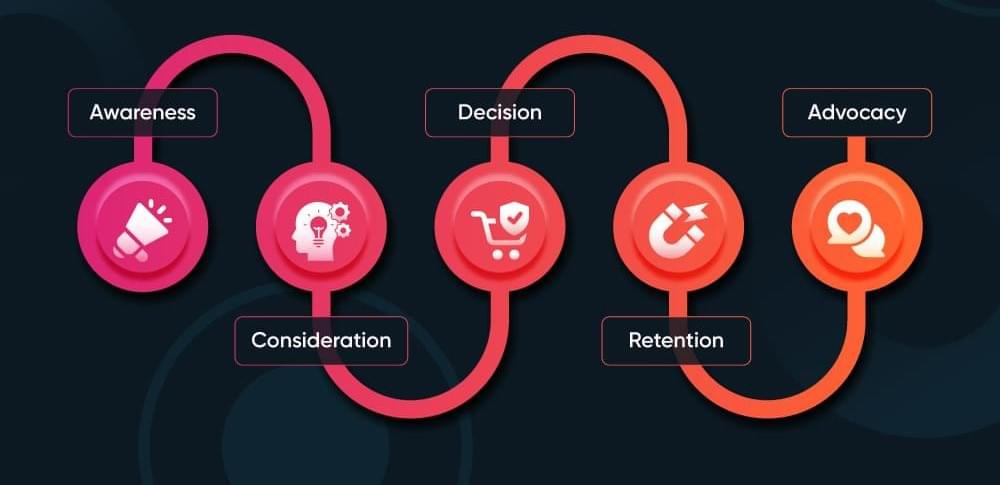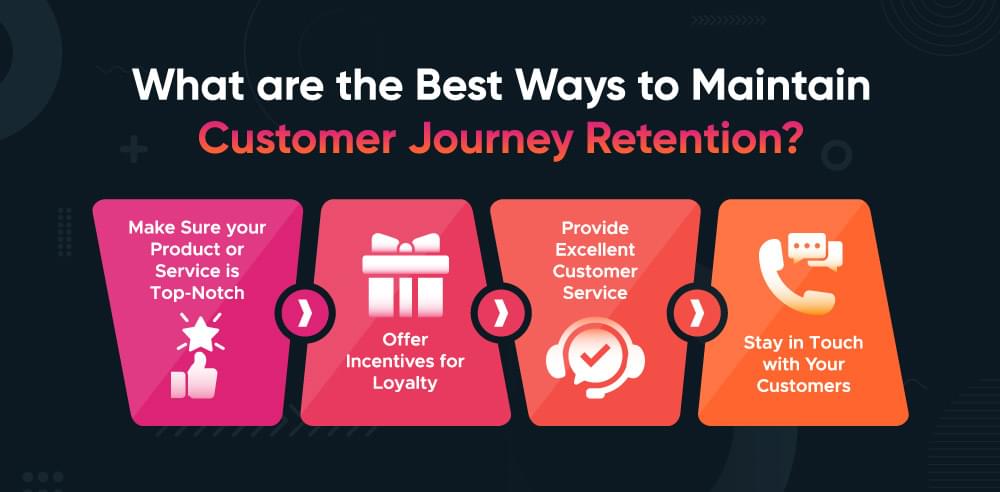
Customer Journey and its Stages (Free Templates)

You’re here on this blog because you likely don’t have a clear idea of the customer journey. If you run an E-commerce store, you must be thinking why do customers add products to their cart just to close the tab later?
Download Free Customer Journey Map Templates
In 2021, nearly 70% of buyers left their carts, and this rate has increased to 73% in 2024. The cart abandonment rate is even higher in mobile users being around 80%. The reasons for this could vary from unexpected charges at checkout, better options, or simply no intent to buy. However, one of the main factors in this is the complicated process and bad user experience. Churnfree states UI design and user experience as the most direct cause of customer loyalty. Various factors contribute to this high rate, including unexpected costs during checkout, complicated processes, or simply browsing without the intent to buy.
Just when you think you know your customers and their needs, something new comes up. Maybe it’s a new technology or a new buying trend that pushes your product back.
If you’re a B2B company and are interested in customer journey for B2B businesses, give a read to this blog: B2B customer journey.
P.S. Get free customer journey templates here.
Table of Content
- What is a Customer Journey?
- Customer Journey vs Customer Journey Map
- What is a Buyer Journey?
- What are the Stages of Customer Journey
- How Often Should you Update your Customer Journey Steps?
- What is Retention in the Customer Journey?
- What are the Best Ways to Maintain Customer Journey Retention?
- FAQs
What is a Customer Journey?
Customer Journey is simply the journey of a customer while making a purchase. The customer journey process starts from the first point, which is awareness, and the last point, which is purchase and post-purchase.
The customer journey consists of steps and stages that a customer goes through. It includes every touchpoint and experience that the customer has with that product. The interaction can be in-store (if it’s a store), online, or through customer experience.
Customer Journey vs Customer Journey Map
The customer journey is the whole experience of the customer, from buying a product to post-purchase, while the customer journey map is the mapping of it. The customer journey map is the visual representation of that process. It identifies key touchpoints, emotions, and pain points while the customer journey shows the stages the customer goes through.
What is a Buyer Journey?
The Buyer journey starts from awareness and ends at the purchase of the product, while the customer journey goes beyond the purchase and covers the post-purchase stages.
What are the Stages of Customer Journey
There are five customer journey stages. Let’s discuss each one by one.

1. Awareness
This is where the customer gets to know about the product. They could know about the product through friends of friends, social media, banners, etc.
The goal here for you is to gather the most users’ attention. Therefore, you need to have a strong marketing campaign.
2. Consideration
This is the stage where the customer considers the product. They will look into your product and check reviews and features. They may also compare and weigh the pros and cons of your product with the one they are currently using. Pricing is also an important aspect that they will consider before buying your product.
The goal here for you is to be as transparent about your features and pricing as possible. If you have a SaaS product, you should have every feature and information defined on your website. Having tutorials and proper documentation also attracts customers. The documentation and setup guides are a plus point when a customer is buying from you.
3. Decision (or Purchase)
This is the stage where the customer decides to buy your product. This decision often comes with thorough research, so make sure you make the setup and onboarding process smooth and hassle-free. Provide the customer with documentation for each feature.
4. Retention
This is the post-purchase stage, where you want to retain the client. You can do this in a number of ways. Provide them with tutorials and documentation of your product and provide fast customer support.
Your goal at this stage is to build a loyal customer who would repeat purchases.
Related Read: What is the most direct cause of customer loyalty
5. Advocacy
AAfter achieving customer loyalty, there comes a stage where those loyal customers become advocates for the brand. They would recommend your product to others for free, talk positively about your product, and spread the word through social media. They are most likely to share their good experience with you on social media.
Your goal here is to turn loyal customers into brand ambassadors to acquire new ones with positive reviews. To do this you should give premium support to your loyal customers and offer them customer loyalty rewards.
I saw a hilarious meme and would like to share this with you. If you do this, too, then you ain’t getting any brand ambassadors for sure.

How Often Should you Update your Customer Journey Steps?
Customer journey steps should be updated on a regular basis, at least once a year. If there’s a big change in your business, then you may need to update it more frequently.
What is Retention in the Customer Journey?
It refers to the customer experience at every stage of the customer journey. You need to keep the customers engaged at each stage for them to reach the final stage. To do so, you can read about customer retention strategies in detail and implement these strategies.
While happy customers might share positive reviews, unhappy customers will definitely share their bad experiences. According to Emplifi, a poor customer experience can be detrimental, with 52% of U.S. consumers sometimes or always walking away from a purchase due to a bad experience. Moreover, 13% of unhappy customers will share their negative experiences with 15 or more people.
What are the Best Ways to Maintain Customer Journey Retention?
Here’s the thing about the retention customer journey: it ain’t over, ever.
That edition of Yogi Berra’s famous quote recalls a new way of looking at the customer journey, born of a significantly enhanced need to retain an existing customer. Once you retain customers, your retention customer journey will become more attentive and effortless. As per economic stats, 65% of an enterprise’s business comes from existing users, and increasing customer retention by 5% can boost the same profit from 65% to 95%.
That’s why customer retention is so necessary. But what are the best ways to maintain customer retention? Here are some ideas:

1. Make Sure Your Product or Service is Top-Notch
This one is a no-brainer. If you want customers to stick around, you need to ensure they’re happy with what they’re getting. That means offering a high-quality product or service that meets (or preferably exceeds) their expectations. It’s also important to be responsive to customer feedback and address any issues that come up promptly.
2. Offer Incentives for Loyalty
Incentives are a great way to encourage customers to keep doing business with you. There are a few different ways you can do this, but some popular options include offering discounts, coupons, or exclusive deals to loyal customers. You can also offer loyalty points or rewards that can be redeemed for merchandise, services, or other perks.
3. Provide Excellent Customer Service
About 52% of consumers expect customer service to respond within an hour. Many brands have the option of live chat with automated queries and also human support to answer their queries instantly. With brands constantly upgrading their customer support services, it’s hard to retain customers when you have support available via email only.
Even if you have fast email support, the idea of live chat appears more fast to the customers. Therefore, its high time to upgrade your customer service in order to retain clients.
Moreover, make sure your customer support team is friendly and go beyond in solving client’s queries.
4. Stay in Touch with Your Customers
Staying in touch with your customers is a great way to keep them engaged with your brand. There are a few different ways you can do this, but some options include sending out regular newsletters, email updates, or even just giving them a call from time to time. By staying in touch, you’ll keep your brand top of mind and show your customers that you care about them and their business.

Over to you
I hope this article helped you understand all the steps a customer goes through in their entire journey. Here are some more guides you might want to read:
Customer retention management for new and existing customers
How to win back lost customers
B2B customer journey
Churn rate vs Retention rate
Is net sales the same as revenue
Gross sales vs Net sales
FAQs
What are the 5 main points of a customer journey?
The five main points are awareness, consideration, purchase, retention, and advocacy. These stages guide customers from discovering a product to becoming loyal advocates who recommend it to others.
What are 5 basic steps in the consumer journey?
The five basic steps are awareness (learning about the product), interest (gathering more information), evaluation (comparing options), purchase (making the decision to buy), and post-purchase (experiencing and reflecting on the purchase).
What are the five A’s of the customer journey?
The five A’s are Aware, Appeal, Ask, Act, and Advocate. These steps represent how customers move from becoming aware of a brand to becoming advocates who promote it to others.
What is the customer journey role?
The customer journey plays a crucial role in mapping out the touchpoints and experiences that influence a customer’s decision to purchase and continue engaging with a brand, ensuring alignment with customer expectations and needs.


